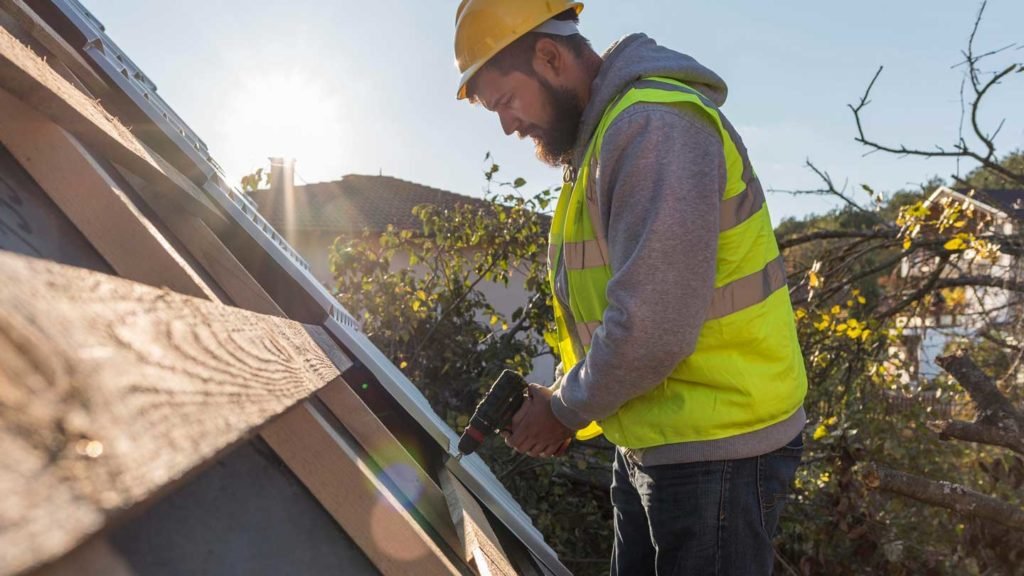Putting in the time and effort to construct a secure, long-lasting, and good roof for a home is time well spent. Protecting your house from the elements while increasing its value is the job of a solid top.
However, many homeowners may not even know where to start when it comes to putting up a roof. Here are four tried-and-true methods for constructing a sturdy, long-lasting roof for your home. Let’s proceed before you look for the Burbank roofers.
Tip #1: Choose the Right Materials
If you want your roof to last as long as possible and withstand harsh weather conditions, carefully consider the materials you choose. Asphalt, metal, clay tiles, concrete, and slate are just a few options for roofing material. Several considerations, like your location, temperature, and budget, will determine which material is ideal for your roof.
Many homeowners find that asphalt shingles are the best option for their roofs because of their low cost and widespread availability. They come in many colors and designs and are simple to set up. However, metal roofs are long-lasting, save energy costs, and are environmentally suitable. They come in several materials, including steel, aluminum, and copper, and may endure for half a century or more with proper care.
For their durability and low care requirements, clay tiles are often used in Mediterranean architecture. Concrete tiles are long-lasting and may be found in various colors and designs. Slate is a durable and sturdy natural stone, but it may be pricey and cumbersome due to its thickness and weight.
The quality of your materials depends on the manufacturer and supplier you pick, but this is true regardless of the material you use. Try to get anything certified safe by organizations like UL and ASTM.
Tip #2: Proper Roof Pitch and Framing
The strength and longevity of a roof depend significantly on its pitch or angle. The rise of your roof will be determined by the material you pick and the climate where you live.
Steeper slopes are preferable in regions with plenty of snow and rain, while flatter ones might work in dry areas. A well-framed roof will not droop or collapse due to the weight of the top. More robust joists or beams are required to carry the load of a flat roof.
The appropriate roof pitch and structure for your requirements should be determined after careful consultation with a structural engineer or roofing contractor. Your roof will be safe and up to code once they consider wind and snow loads.
Tip #3: Ensure Proper Ventilation
Having inadequate ventilation, condensation may form on the roof and the supports that hold it up. It can result in various issues, some of which include rusting and mold formation, amongst other things. Ventilation systems that have been constructed carefully have the potential to enable the temperature and humidity levels on the roof deck and in the attic to be managed. That possibility exists because of the ventilation system’s ability to control these factors. Vents must be put in the correct positions and shielded from obstacles such as insulation and other materials before functioning correctly.
When planning a roof’s ventilation system, it’s essential to consider the roofing material. Metal roofing, for example, may need a ventilation system different from that used for asphalt shingles.
Tip #4: Choose the Right Flashing
To keep water from infiltrating the roof and causing damage, flushing is an essential component. Depending on the material and slope of your roof, you must choose the appropriate flashing. Metal, plastic, or rubber flashing should be around all chimneys, skylights, and vents to prevent water intrusion.
Rainwater must be diverted from the roof and the foundation to avoid water damage and erosion. Therefore, gutters and downspouts are crucial. Having gutters that fit your roof, slope properly, and are clear of debris are all essential components of a successful gutter installation.
To prevent water from leaking into the basement or crawl space, downspouts should reach several feet from the foundation that the Burbank roofers can help in this case.
Conclusion
A solid roof for a home is a significant financial commitment that needs meticulous preparation and implementation. Adhering to these six tried-and-true guidelines can make your roof strong, functional, and long-lasting.
You should engage a skilled roofing contractor, ensure enough ventilation, put in working gutters and downspouts, etc. These suggestions will give you confidence that your house is safe from the elements.

